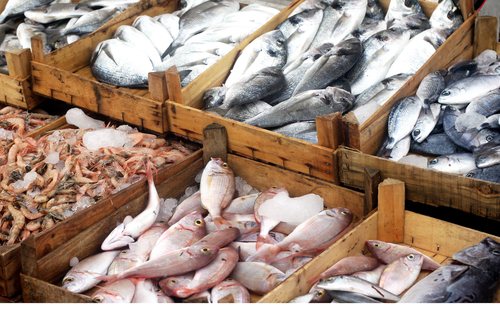Image courtesy of Shutterstock.
Look at any seafood guide and you’re bound to come across the occasional red flag with an ominous warning: “High in Mercury.” Scary enough, but what exactly does that mean? Just how is mercury winding up in the fish on your plate?
Mercury itself isn’t a bogeyman, as it occurs naturally at low levels in rock, soil, and water throughout the world. But about half of all mercury released into the atmosphere today comes from the burning of fossil fuels like coal, oil, and natural gas, with contributions from waste incineration, mining, and other industrial activities. This mercury pollution falls directly into the ocean and other water bodies or onto land, where it can be washed into waterways. In this form, mercury poses little danger because living things can get rid of it quickly. But bacteria convert mercury as it’s carried down from the ocean surface, turning it into a highly toxic form called methylmercury.
The food chain takes it from there, as methylmercury is absorbed by phytoplankton, which are gobbled up by zooplankton, which are then feasted upon by small fish and o... Read more
